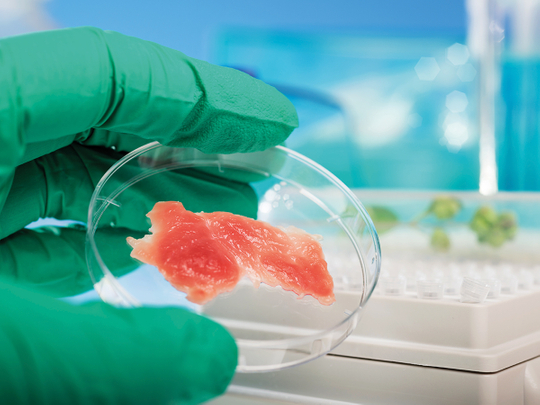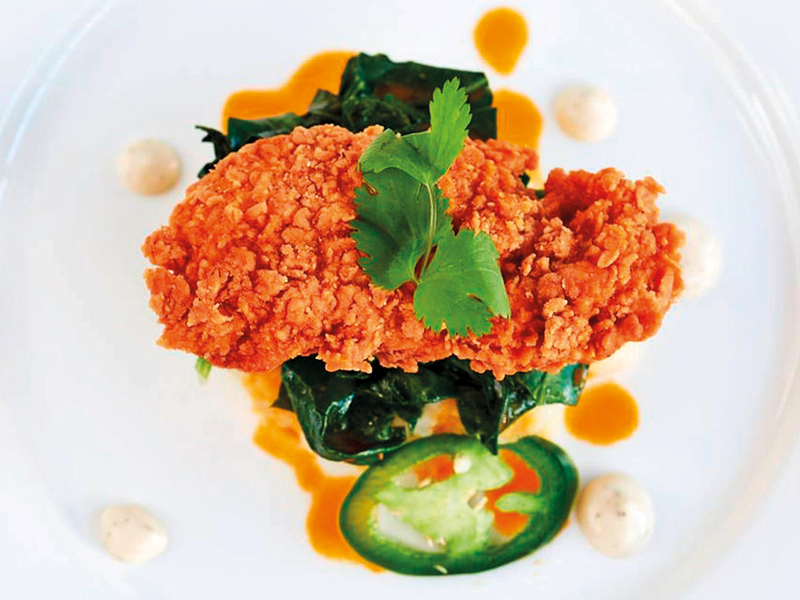
San Francisco: In a converted warehouse in San Francisco, a group of scientists are working on creating laboratory-grown meat. Their company, called Just, recently announced that it had created chicken nuggets grown from stem cells found in a chicken’s feather.
The start-up hopes to sign a commercial agreement to sell its chicken by the end of the year, a move that it hopes will be just the beginning. Just’s bosses predict that within 20 years, its products will be more popular, cheaper and healthier than meat derived from livestock.
We applaud the vegans and vegetarians of the world, but they are a tiny fraction of the market. It’s only by winning over those [meat eating consumers] that we will actually make a dent in the issue here.
The first lab-grown or cell-cultured meat was a beef burger created by scientists at Maastricht University in the Netherlands in 2013. Since then, investment has soared and dozens of US food companies, many in Silicon Valley, are working on alternatives to traditionally reared meat.
Today, global meat consumption stands at over 300 million tons a year, more than double what it was 30 years ago. Livestock is contributing to climate change, representing approximately 14.5 per cent of global greenhouse gas emissions and rising.

Meanwhile, studies have found that high intakes of red and processed meat lead to cancer, cardiovascular disease and a higher mortality rate.
A few miles across the San Francisco Bay, a company called Impossible Foods has engineered a plant-based burger that bleeds when cooked. The patty, which contains no meat, is made using an ingredient called soya leghemoglobin, better known as Heme, a protein found in meat that gives the burger its texture and taste. It is produced by fermenting genetically engineered yeast.
300 m
tonnes of meat consumed globally each yearSales of plant-based meat alternatives increased by 24 per cent in the US alone in the last year, according to Nielsen. Non-dairy alternatives for cheese, butter, yoghurt and ice cream have grown 50 per cent in the past year and plant-based milk accounts for 15 per cent of the total market.
The companies say they are deliberately targeting consumers who eat meat, since vegetarians and vegans represent less than 5 per cent of the US population.
“We applaud the vegans and vegetarians of the world, but they are a tiny fraction of the market,” said an Impossible Foods spokesman. “It’s only by winning over those [meat eating consumers] that we will actually make a dent in the issue here.”

Beyond Meat, which makes plant-enriched burgers designed to replicate beef patties, claims to be one of the fastest growing companies in the US.
The Los Angeles-based company, whose investors also include Bill Gates, has created a line of products using pea protein to mimic the look and taste of beef and chicken. Its ‘Beyond Burger’ is sold in TGI Friday’s, and recently Tesco.
Impossible Foods has raised more than $400 million (Dh1.47 billion) from a roster of investors that include Google Ventures and Gates.
One of the world’s largest food companies, Tyson Foods, is bankrolling both lab-made plant and lab-made meat products. However, not everyone is convinced of the benefits.
24 %
increase in sales of plant-based meat alternatives in US“There is no evidence that lab-grown meat is sustainable,” Dana Perls, at Friends of the Earth, said.
Does it taste as good?
But there is a more simple, and pressing, question. Does artificial meat taste any good?
Judging from the response at fine dining San Francisco restaurant Jardiniere, it does. Its head chef replaced the beef burger on her menu with the Impossible Burger and it proved so popular that people were queuing outside to try it before the restaurant opened.
In a similar vein, the chicken produced by Just tastes remarkably like chicken from the farm, at least when wrapped in the salty and crispy breading of a chicken nugget. More distracting may be the chicken’s spongy quality.
Lowering the cost of producing lab-made meat is also a major barrier to distribution.
“It’s still much, much more expensive than conventional meat production,” says Joshua Tetrick, Just’s boss.
Regulation may pose another roadblock. Although Just is creating its products in the US, it plans to first sell in Asia. It partially blames what it calls an immature regulatory environment in the US. Some progress is being made. The Department of Agriculture and the Food and Drug Administration recently announced they were creating a joint regulatory framework to oversee the production of cell-cultured food products. But proponents of lab-grown meat argue that what they are making will ultimately be safer. “I can source everything that went into that,” said Chris Jones, Just’s head of development.
Not everyone is won over, most notably the meat industry itself.
“To date, only a select few have tasted new cultured meat products, so it is impossible to say whether they will have a role in our diets,” said The North American Meat Institute.
“Kudos, however, to these innovative scientists for their determination,” adds the lobby group. “Imitation is the highest form of flattery.”
Vegan meat substitutes
Seitan: Made from wheat gluten, this has a meaty texture. Can substitute for chicken or beef. A mild flavour and chewy texture on its own but adapts when mixed with other ingredients.
Tofu: Originating from China, it was traditionally made by mixing soya milk with nigari, the by-product of extracting salt from seawater. Today, it comes in lots of different forms, from pudding-like to block form and takes on the flavour of whatever you cook with it.
Tempeh: A popular substitute for ground beef in dishes such as chillies, it is a soya-based product typically firmer than tofu. Tempeh is made by fermenting cooked soya beans. Known for its nutty flavour, it absorbs the flavours of foods and sauces added to it.
Jackfruit: From the tropics, the flesh of this large, oval-shaped fruit is eaten raw or cooked. When cooked its flesh has a meaty texture, similar to pulled chicken. It soaks up the flavours of whatever it is cooked with it. Its seeds, encased in bulbs, can be eaten too.
Mushrooms: Known for their savoury flavour and a dense texture, cremini and portobello mushrooms have particularly meat-like textures when cooked, although they are not as rich in protein as some of the other meat alternatives.
Lentils: The hearty and protein-rich grain legume — known as a pulse — is rich in protein and comes in different colours and varieties including green, red, brown and black.












